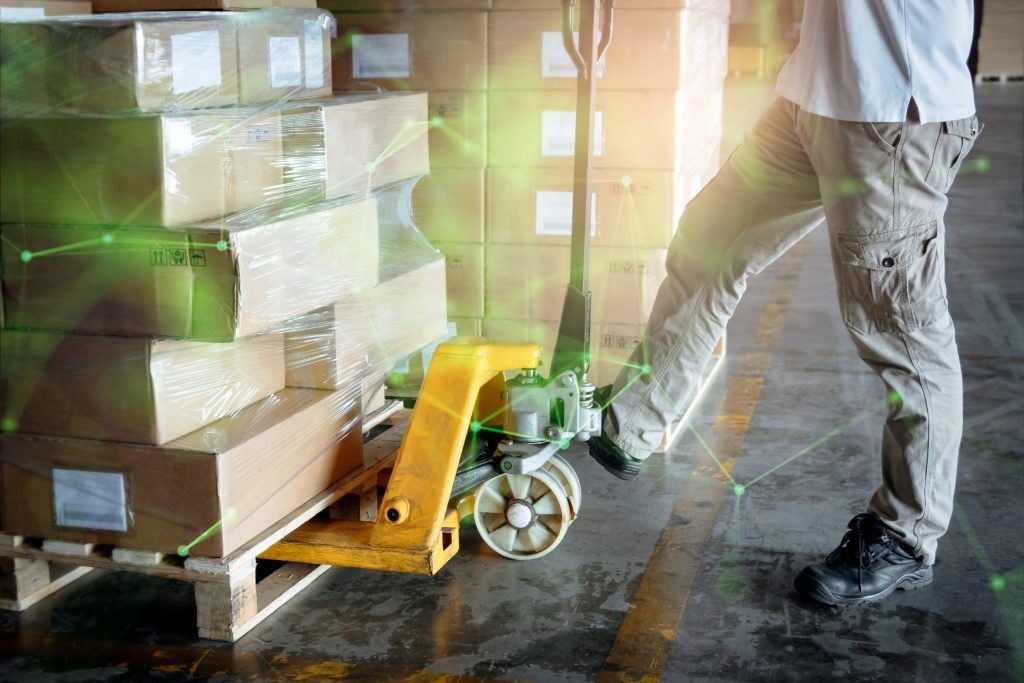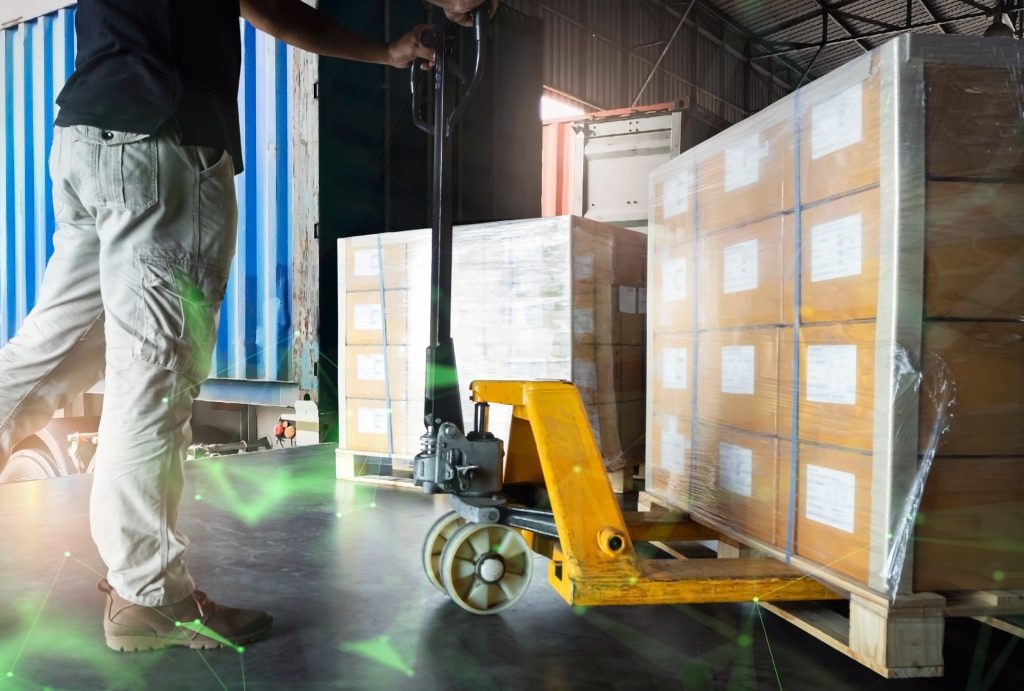What is Inbound Logistics?
Inbound logistics refers to the activities involved in receiving, handling, and storing raw materials and goods from suppliers. It’s a fundamental part of the supply chain that ensures products flow smoothly into your business. For small businesses, effective logistics are crucial, as it directly affects production schedules and customer satisfaction.
Efficient inbound logistics can lead to improved inventory management, reduced costs, and a more streamlined production process. By understanding and optimizing inbound processes, businesses can gain a competitive edge in their respective markets.
Key Components of Inbound Logistics
Inbound logistics encompasses several key activities and processes. These include order processing, transportation management, warehouse operations, and supplier coordination. Each of these components plays a vital role in ensuring a smooth supply chain.
- Order Processing: This step involves making and approving purchase orders. Quick order processing ensures the right materials are ordered and arrive on time.
- Transportation Management: This involves selecting the best transportation methods to move goods from suppliers to your warehouse. Effective transportation management can reduce costs and improve delivery times.
- Warehouse Operations: Once goods arrive, they need to be received, inspected, and stored. Efficient warehouse operations ensure that materials are available when needed and stored in optimal conditions.
- Supplier Coordination: Maintaining strong relationships with suppliers is crucial. Effective communication and collaboration can lead to better terms, timely deliveries, and improved quality control.
Each of these activities contributes to a smooth supply chain, reducing delays, minimizing costs, and ensuring that production schedules are met.

Understanding the Inbound Logistics Process
The process involves several steps that must be carefully managed to ensure efficiency. Here’s a step-by-step guide on how it works.
1. Order Placement and Processing
It starts with placing an order with a supplier via phone, email, or EDI. The warehouse team then checks the order for accuracy and ensures all needed information is included.
2. Receiving and Inspection
Upon arrival at the warehouse, the warehouse staff receives the goods. They verify the items against the order and check for any damages or discrepancies. They document and report any issues found to the supplier immediately.
3. Storage
After inspecting them, we store products in specific areas of the warehouse based on their size, weight, temperature needs, and more. This optimizes space and makes it easier to quickly find and retrieve items when needed.
4. Inventory Management
Inventory management is key in managing a warehouse. It's about tracking products coming in and out, checking stock levels, and doing regular checks to make sure everything's right. Thanks to tech like barcode scanners or RFID tags, keeping track of inventory is now easier and more accurate.
5. Order Fulfillment
When an order arrives, warehouse staff quickly pick the requested items from their spots using the order form details. Next, they securely pack the items for shipping.
6. Shipping
After an order is packed and labeled, it's ready to be shipped. The company can do this or a third-party logistics company. Shipping includes picking the cheapest and fastest way to transport, tracking the order, and making sure it gets to the customer on time.

The Impact of Inbound Logistics on Business
Efficient inbound logistics can have a significant impact on business operations. Here are some key benefits:
- Improved Customer Satisfaction: By ensuring materials are available when needed, businesses can meet customer expectations and deliver products on time. This can lead to increased customer satisfaction and loyalty.
- Lower Costs: A good inbound logistics plan can help businesses save money by choosing the best routes, combining shipments, and cutting down on wait times. This can lead to savings for the company.
- Streamlined Operations: By having a well-organized warehouse and inventory management system, businesses can streamline their operations and improve overall efficiency. This leads to reduced labor costs and faster processing times for orders.
- Cost Reduction: Efficient inbound logistics can reduce costs by minimizing delays, improving inventory management, and optimizing transportation methods.
- Enhanced Efficiency: Streamlined inbound logistics processes can lead to more efficient production schedules, reducing downtime and increasing productivity.
Inbound Logistics vs. Outbound Logistics
Understanding the difference between inbound and outbound logistics is key. Inbound logistics is about receiving and storing goods, while outbound logistics involves getting finished products to customers. This includes warehousing, managing inventory, processing orders, and shipping goods.
Outbound logistics is crucial for keeping customers happy and ensuring the supply chain works efficiently, ensuring products arrive on time and in good condition. It greatly affects a company's profits and reputation, so businesses focus on it to stay ahead in competitive markets.
Inbound logistics is for incoming raw materials, and outbound logistics is for sending out finished goods to customers and channels. Each requires its own strategies for best results.

Best Practices for Optimizing Inbound Logistics
Automation
To enhance inbound logistics, automation is crucial. Technology enables the automation of tasks such as order processing, transportation management, and warehouse operations. This approach reduces errors, improves efficiency, and saves time. Additionally, it leads to cost savings and more efficient use of resources.
Supplier Relationships
Another key to good inbound logistics is having good relationships with your suppliers. Working closely with them means you get your materials on time and keep the quality steady. By keeping up these relationships, small business owners and logistics managers can avoid delays and problems in getting what they need.
Inventory Management
Managing inventory well is key to making things run smoothly. Using warehouse management systems lets businesses keep an eye on their stock in real time. This helps avoid running out of products or having too much. It makes planning easier and reduces the chance of having extra stock lying around.
Staff Training
Besides tech, teaching employees the right way to do things is key for good inbound logistics. Training them on how to work safely and efficiently helps get more done and reduces accidents or damage to products.
Continuous improvement
Lastly, continuous evaluation and improvement are key components of effective inbound logistics. Regularly reviewing processes and making necessary adjustments ensures that operations remain streamlined and cost-effective. This also allows businesses to stay competitive in a rapidly changing market.

Technology and Inbound Logistics
Technology plays a crucial role in optimizing inbound logistics. Here are some key technologies to consider:
- Transportation Management Systems (TMS): These systems help businesses select the best transportation methods, track shipments, and manage transportation costs.
- Warehouse Management Systems (WMS): These systems improve warehouse operations by tracking inventory levels, managing storage locations, and optimizing picking and packing processes.
- Automation Tools: Automation tools can streamline order processing, reduce errors, and improve efficiency.
By leveraging technology, businesses can enhance their inbound logistics processes, reduce costs, and improve efficiency.
Future Trends in Inbound Logistics
The field of receiving goods is constantly evolving, with new practices and technologies emerging. Here are some trends to watch:
- Artificial Intelligence (AI): AI can optimize transportation routes, predict demand, and improve inventory management.
- Internet of Things (IoT): IoT devices can track shipments in real-time, monitor storage conditions, and provide valuable data for decision-making.
- Sustainability: Businesses are increasingly focusing on sustainable practices, such as reducing carbon emissions and using eco-friendly materials.
These trends are shaping the future of inbound processes, making it more efficient, cost-effective, and environmentally friendly.

Conclusion.
Inbound logistics is a crucial aspect of supply chain management, impacting everything from inventory management to customer satisfaction. By understanding and optimizing inbound logistics, businesses can improve efficiency, reduce costs, and gain a competitive edge.
We recommend using the tips and tech mentioned here to improve your operations. Inbound logistics isn't just a process; it's a key advantage for companies wanting to succeed in today's competitive market. Keep up with these trends to do well in your inbound processes.
FREQUENTLY ASKED QUESTIONS
Inbound logistics refers to the process of receiving, storing, and managing materials coming into a business.
Related posts

Outbound Logistics: What You Need to Know.
In supply chain management, being efficient is essential. Outbound logistics plays a key role in ensuring that products reach customers on time and in great shape. Understanding outbound logistics can greatly improve operations in supply chain management, e-commerce, or using a Transportation Management System. This blog post will guide you through outbound logistics. We'll cover its main parts, processes, and challenges ahead. You'll also learn about future trends in the industry. By the end, you'll fully understand outbound logistics. Plus, you'll get practical tips to improve your logistics strategies.

Enhancing Inventory Management through Consignment Stock
Inventory optimization is crucial for maintaining seamless operations and one effective strategy that has gained popularity is consignment stock. This approach not only enhances inventory turnover but also improves cash flow, product visibility, and customer satisfaction. In this comprehensive guide, we will define consignment stock. We will explore the concept and its significance. Additionally, we will discuss how it can transform the way you manage your inventory.

What is Third Party Logistics (3PL)?
In simple terms, third-party logistics refers to the outsourcing of e-commerce logistics processes to a third party. These tasks involve managing inventory, storing goods, packing, and shipping products to ensure a smooth transition from supplier to customer. Today's fast-paced, globalized economy critically depends on the role of third party logistics. It enables businesses to scale without the need for massive capital investments in warehouses, technology, and staff. This allows them to focus on core competencies like product development and market expansion.
